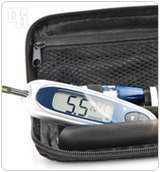
Although more commonly experienced by women during menopause, low progesterone can affect women of any age. When estrogen starts to fluctuate or decline during perimenopause, progesterone levels may plummet as well. However, for women in the peak of their reproductive years, this condition often leads to infertility. No matter what stage of life you're in, there are always signs to look out for to determine whether or not you have low progesterone.
Why Is Progesterone Important?
For pregnant women, progesterone plays a significant part in carrying a baby to term. During a normal menstrual cycle, progesterone levels rise during ovulation to increase the chances of conception. If the egg is then fertilized, this hormone is responsible for maintaining the lining of the uterus and transforming it into a suitable environment for the fetus.
What Are the Signs to Look for?
Every woman's body expresses progesterone deficiency in a different way, but there are several common signs to look for.
- Menstrual irregularities. If you are missing periods or are experiencing extremely heavy periods with clotting, it could be due to a progesterone deficiency. When estrogen thickens the uterine lining, but progesterone isn't properly flushing this tissue on a regular basis, it results in irregular periods.
- Benign growths. This menstrual irregularity may result in the development of benign polyps or fibroids in the uterus. These growths are usually not life-threatening and their frequency decreases if you work to balance your hormones.
- Changes in physical health. Low progesterone naturally leads to estrogen dominance, which can cause symptoms like breast tenderness, weight gain (especially around the midsection), and bloating.
- Hot flashes and night sweats. Low progesterone has been linked to these troublesome symptoms, which in themselves can cause a host of other problems like insomnia, body odor, and irritability.
How to Test for Low Progesterone

You can detect low progesterone in a number of ways. The simplest way to detect a problem is to keep track of your menstrual cycles (by tracking on which days they start and end each month). Another test involves taking your body temperature at the time of ovulation; the higher levels of progesterone should cause you to maintain a higher body temperature during this period. In addition, you can always talk to your doctor to find out how to get accurate and official readings of your hormone levels.
Recommendation
Progesterone levels can be detected via blood test or saliva test. Click on the following link to learn more about understanding your progesterone levels.

